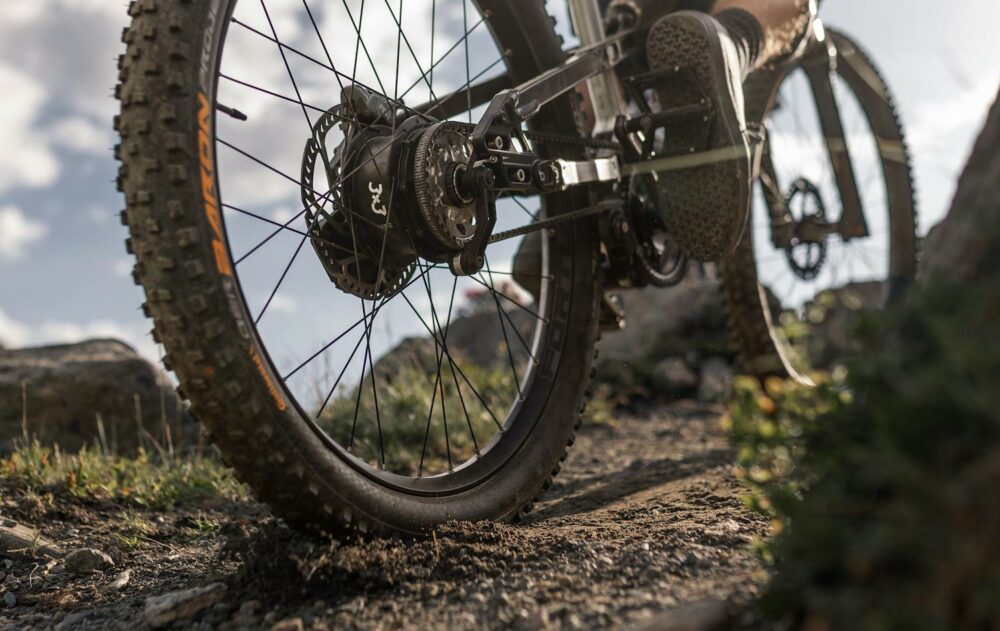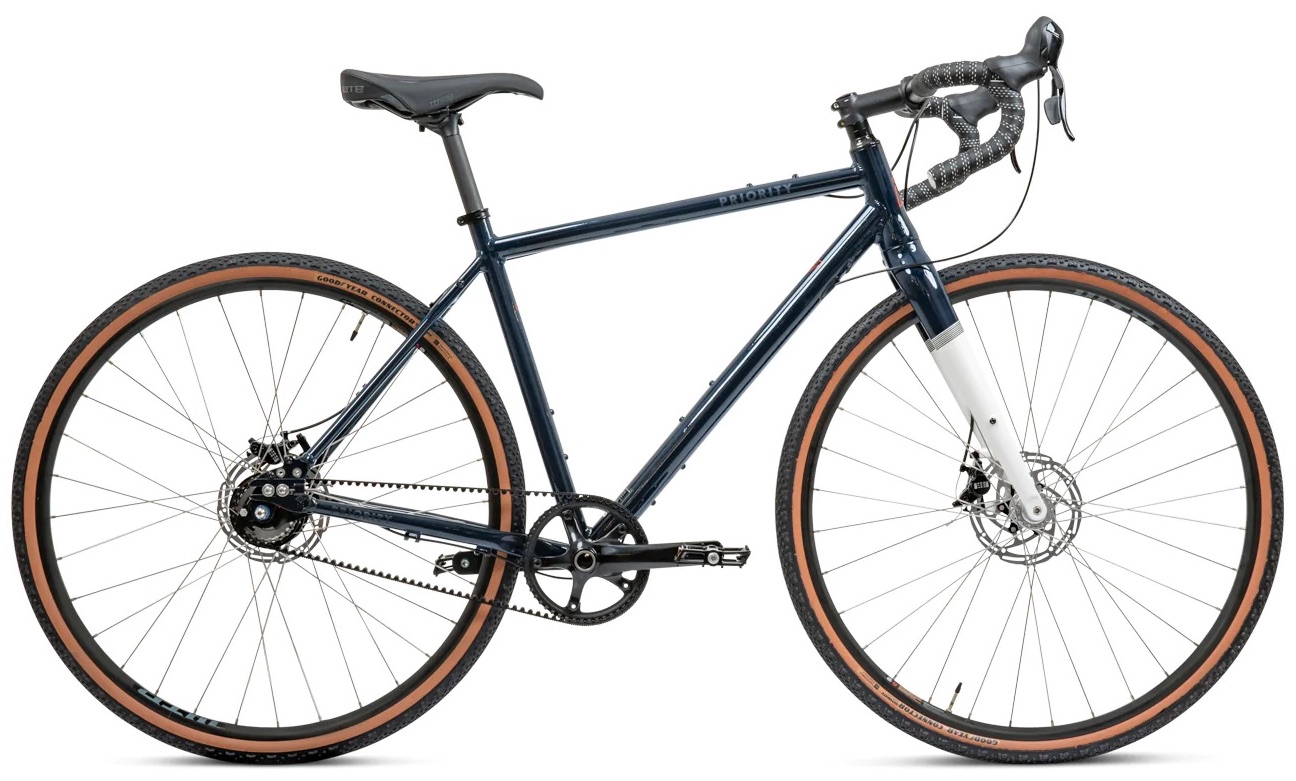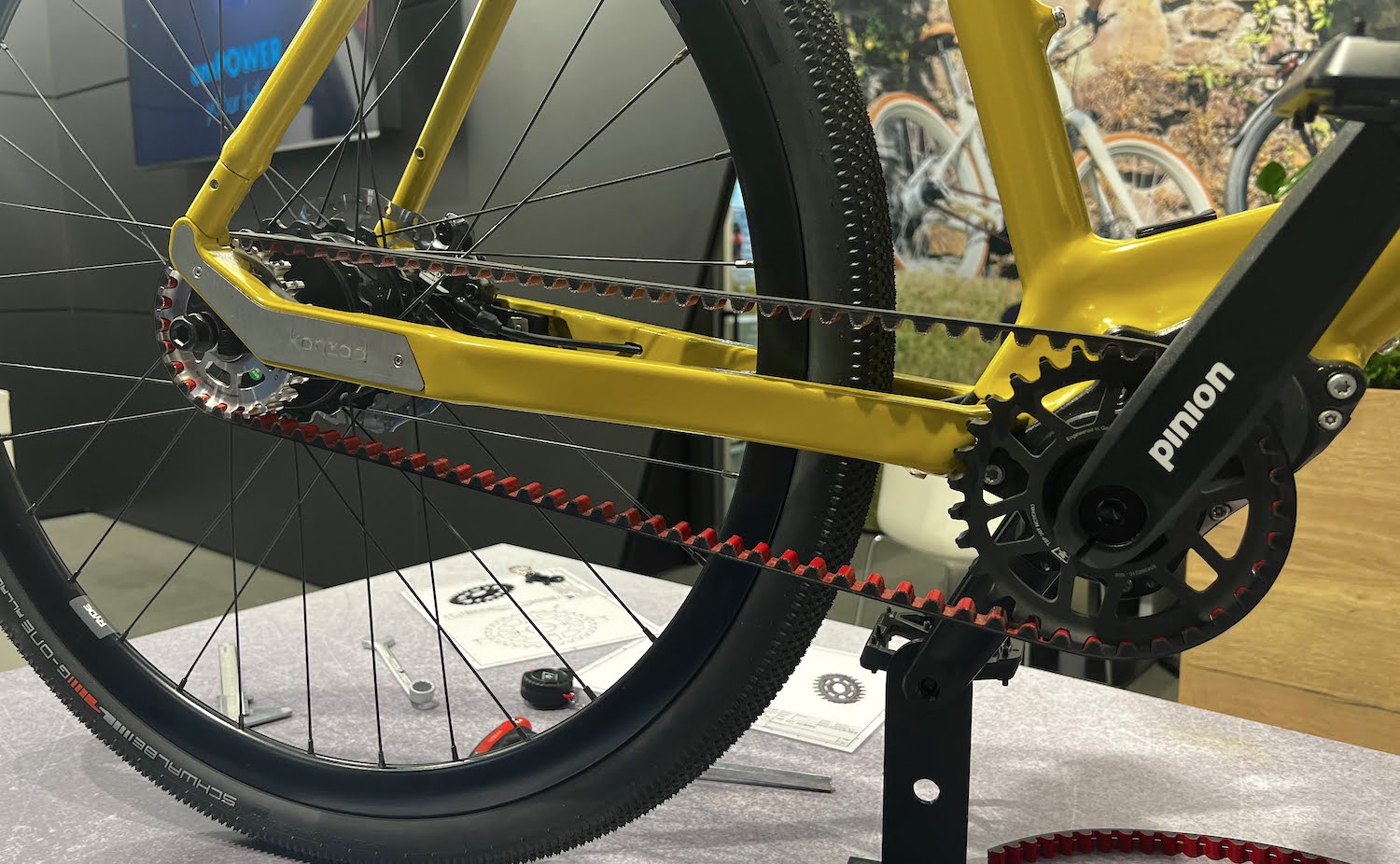In the last decade, belt drivetrains have increased in popularity on urban bikes, and this is for many reasons.
Belts are clean, silent, and can last 3-4 times longer than chains. They also do not rust and do not require any grease or lubrication. This keeps bike maintenance to a minimum (just a splash of water will do) and ensures you never get black marks on your hands or pants again.
But belt drive systems have always relied on the use of a gearbox or internal gear hub to provide multiple gear ratios… until now.
The prototype multi-speed belt sprocket that we’re discussing today could be an internal gear hub killer, replacing the 2 and 3-speed models sold on millions of bikes each year. Veer Shift Drive aims to combine the efficiency and performance of derailleur gear systems with the durability and low maintenance of belt drives!
In this article, I’ll first explain how external belt shifting works. I’ll then compare Veer Shift Drive against internal gear hubs, we’ll take a look at the most suitable bikes for this drivetrain, and we’ll finish up with some frequently asked questions.
So, how does this crazy transforming sprocket work?
How Does Veer Shift Drive Work?
Veer Shift Drive places six rotating segments onto a typical freewheel at the rear hub. On each side of the segments is a different number of belt teeth.
When the rider initiates a shift, the segments flip one by one, allowing the belt to transition to the opposite side. By the time all six segments have rotated 180 degrees, the diameter of the sprocket will have changed – increasing or decreasing the gear ratio of the bike.
The segment rotations are driven by pedal force, which allows the segments to flip at a rate that perfectly matches the rider’s cadence. You’ll also notice the rotations are all completed in the zone that’s never in contact with the belt – this guarantees the sprocket is always locked in one gear or the other.
A tensioner takes up the belt slack and ensures the belt stays on, even over rough terrain.
Upon product launch, the up and downshifts will be made using a wireless shifter at the handlebar, but a cable-operated shifter will be available down the line.
Two-Speed Belt Drive Shifting

As far as I’m aware, this futuristic-looking drivetrain is the first two-speed belt sprocket for bicycles.
Instead of the belt shifting across the rear sprockets as we see on chain drive, this sprocket shifts underneath the belt. This is an important feature as belts must operate in a perfectly straight line.
The high gear is 1.4X larger than the low gear (140% gear range), which might not sound like a lot, but it can be all a bicycle needs in a flatter urban setting – especially if fitted to an electric bike.
You can think of the second gear as an ‘overdrive’ gear for high-speed cruising or a ‘bailout’ gear for climbing up hills. For reference, competing internal gear hubs have a range of 138 to 186%.
| Internal Gear Hub Model | Number of Gears | Gear Range |
| Sturmey Archer S2 Kickback | 2 | 138% |
| Veer Shift Drive | 2 | 140% |
| Classified Powershift | 2 | 146% |
| Bafang 3 | 3 | 165% |
| Sturmey Archer S3X | 3 | 160% |
| Shimano Inter 3 | 3 | 186% |
Shift Drive drops in place of a cassette (or a drive sprocket) on existing wheels. In fact, this drivetrain should be retrofittable to almost any bike, as the tensioner provides the appropriate belt tension, and the Veer belts can uniquely be split and installed on any bicycle frame.
External belt shifting could end up on the full gamut of bikes, including folding bikes, and even full suspension mountain bikes.
So, what are the main advantages of external belt shifting when compared to internal gear hubs?
Advantages of External Belt Shifting

Regarding functionality and cost, Shift Drive will compete with the 2 and 3-speed Shimano, Sturmey Archer and Bafang hubs found on urban and commuter bikes.
This drivetrain holds a surprising number of advantages over internal gear hubs.
To start, it’s a full kilogram lighter and can operate with a higher drive efficiency. This is because it engages fewer components than a gear hub – after all, planetary gear sets whir away inside hubs and generate friction.
With external belt shifting, you can shift under full power, and there won’t be a big clunk between gear changes. This is because the belt slowly transitions across the morphing sprockets, allowing for super smooth gear changes.

Unlike internal gear hubs, Shift Drive is compatible with rear hub motors found on the majority of eBikes around the world. This is a big deal as bikes with rear hub motors are currently limited to using either derailleur gears or expensive gearboxes. Shift Drive would bring low-cost shifting and belts to a new category of eBikes.
External belt shifting is compatible with mid-drive motors too, and it’s perhaps even more suitable than a gear hub as it can potentially handle more input torque.
And in the event of component failure, replacing a belt sprocket will be much easier than cutting an internal gear hub from a wheel, and re-building it onto a new rim.
The advantages of Shift Drive all sound pretty good. But it’s important to note that internal gear hubs have been refined on bicycles for over a century, so they will be a tough component to beat!
Let’s now understand why they are so great.
Advantages of Internal Gear Hub Shifting

Gear hubs have proven the test of time. They are affordable and reliable thanks to their enclosed design that protects the gears from the elements, extending the hub lifespan, and ensuring consistent performance.
Gear hubs require very little maintenance and you can shift gears anytime, including while stationary.
In addition, the shifting of most internal gear hubs is made using a reliable cable-activated mechanism. No batteries, electronic components, or wireless signals are required to make shifts, keeping things as simple as possible.
Right, what will it take for Shift Drive to beat internal gear hubs?
What Will It Take To Beat Internal Gear Hubs?

As Shift Drive is still in development, it will take a while before we know whether it’s high-performing, reliable, and long-lasting.
If Veer wants to go head-to-head with multi-speed hubs, here are some things they will need to perfect:
- The multi-speed belt sprockets need to last as long as regular belt sprockets.
- The rotating segments need to be packed with grease, and well-sealed so that they can freely rotate even with exposure to dust and debris.
- The belt needs to stay on the sprocket under high torque applications, as well as over rough terrain.
- The wireless shifter needs to be fast and accurate, with a user-friendly design.
- The tensioner needs to be durable and silent in operation.
If any of these things are not up to scratch, bike manufacturers will simply stick to tried and tested internal gear hubs.
Let’s now take a look at the types of bikes that will best suit Shift Drive.
What Kind of Bikes Are Suitable For Veer Shift Drive?

Budget Urban Bikes
Low-cost urban bikes are designed to be as low-maintenance and reliable as possible, so it makes sense to pair them with multi-speed belt drives. Bikes in this category include commuting bikes, folding bikes, rental bikes, and beach cruisers. The Priority bike range will give you a good idea of what these bikes look like, and how they are priced.
Mid Drive eBikes
Mid-Drive urban eBikes like the Yamaha B01 are another bike category that’s suitable for Shift Drive. Mid motors can take advantage of the lower gear ratio to provide more wheel torque up steep hills, allowing the motor to operate more efficiently, and increasing the overall range. Alternatively, bike manufacturers could leverage the lower gearing of Shift Drive to instead fit smaller, lighter and less powerful motors to their eBikes, which would allow for smaller batteries too.
Hub Drive eBikes
Shift Drive would also be suitable for hub drive eBikes from brands like Rose, Geos, and Urwahn. While the motor will not take advantage of the lower gearing on steep climbs, the rider will be more effective at helping the motor, which ultimately increases eBike range.
Bikes That Need More Gear Range
A niche application for Shift Drive could be to broaden the gear range of a gearbox drivetrain. Currently, those who are dissatisfied by the gear range of their gearbox or gear hub will usually fit a two or three-speed planetary gear crankset, but Shift Drive could be a lighter, cheaper and more efficient option.
Light Electric Vehicles
Veer has made it quite clear they want their products on more than just bicycles. Shift Drive could also end up on lightweight scooters, mopeds and all kinds of urban delivery vehicles.
Before I sum everything up, let’s go through some frequently asked questions to make sure you’re fully informed about this unique drivetrain.
Veer Shift Drive FAQs

How much will Veer Shift Drive cost?
If Veer wants this gear system to be competitive with internal gear hubs, the sprocket and tensioner will likely need to cost US $150 or less.
How much will Veer Shift Drive weigh?
The front sprocket, two-speed rear sprocket, belt, and tensioner total 570 grams. This means it’s about 50% heavier than *just* a chain, or around a kilogram lighter than an internal gear hub with a belt drivetrain.
What would happen if the rotating segments jammed?
If any of the rotating segments jam with debris, there is an internal clutch-like mechanism that will prevent the shift from occurring. The worst-case scenario is that you would be locked into one gear should you jam a segment.
What would happen if you stopped pedalling mid-shift?
The gear change would simply pause temporarily, and resume once you’ve started pedalling again – just like a derailleur.
Do the missing belt teeth in between the segments affect the performance?
There will undoubtedly be more flexing in the belt, but whether this translates to durability concerns or additional drive resistance, we simply don’t know yet.
Summary
Veer Shift Drive is a novel prototype that certainly shows a lot of promise.
Compared to internal gear hubs, Shift Drive could be lighter, more efficient, easily serviced or replaced, compatible with hub motors, shifted under full power, able to handle more input torque, and easily retrofittable to existing urban bikes.
If Veer wants this to be the drivetrain of choice on millions of urban bikes around the world, they will now have to prove Shift Drive is reliable and long-lasting.
Let’s wish them the best of luck.




